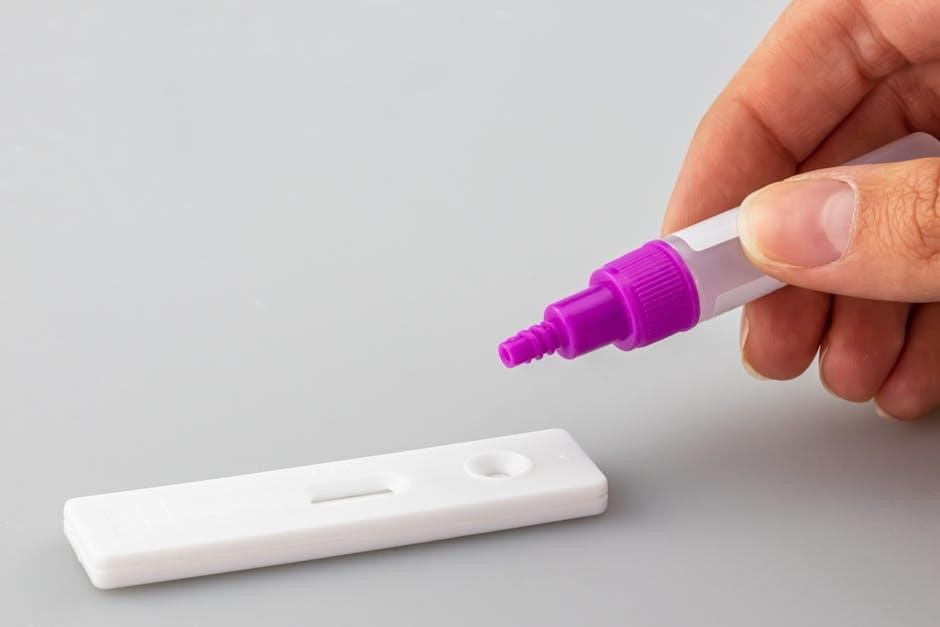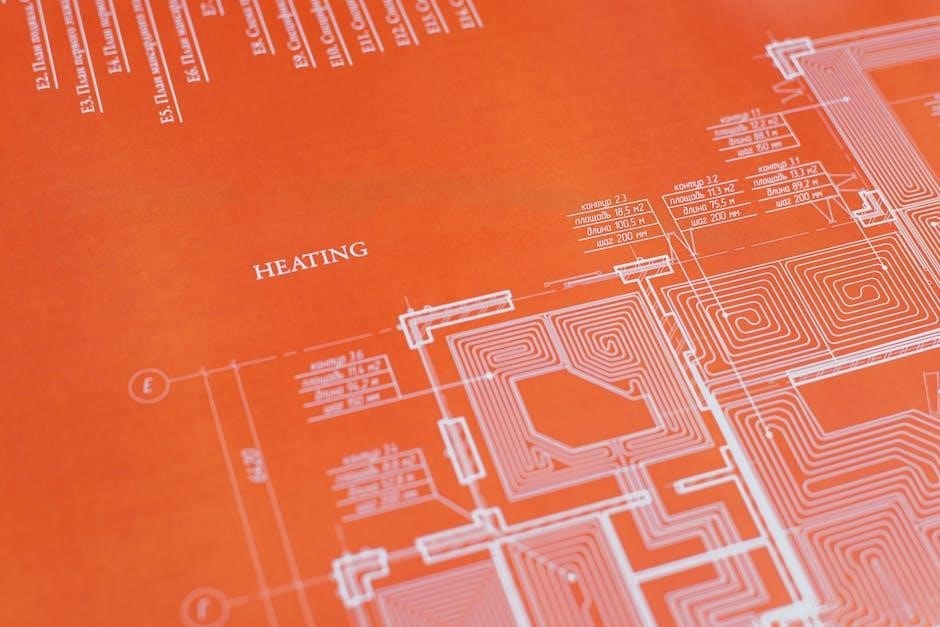Heatwaves pose significant risks to health and safety‚ making preparedness crucial․ Staying informed‚ hydrating‚ and cooling homes effectively are key strategies․ Protecting vulnerable populations and community support are essential for safety during extreme heat․
Understanding Heatwaves and Their Impact
A heatwave is a prolonged period of abnormally high temperatures‚ often exceeding the average for a specific region․ These extreme conditions can lead to dehydration‚ heat exhaustion‚ and heat stroke‚ particularly affecting vulnerable groups like the elderly‚ children‚ and those with chronic illnesses․ Heatwaves also strain energy and water resources‚ increasing the risk of power outages and shortages․ Additionally‚ they can exacerbate environmental issues such as wildfires and air quality degradation․ Understanding the causes and effects of heatwaves is crucial for developing effective strategies to mitigate their impact․ Recognizing the signs of heat-related illnesses and knowing how to respond is essential for protecting oneself and others during these events․

The Importance of Being Prepared
Preparation is vital to withstand the challenges posed by heatwaves․ By taking proactive steps‚ individuals can safeguard their health‚ homes‚ and communities․ Simple measures like stocking up on water‚ ensuring proper ventilation‚ and staying informed about weather alerts significantly reduce risks․ Preparedness also involves educating oneself on recognizing heat-related illnesses and knowing how to respond․ Communities that build support networks and share resources fare better during extreme heat events․ Being prepared not only enhances personal safety but also strengthens collective resilience against the adversities of heatwaves․ Taking these steps ensures that individuals and communities are equipped to face and recover from heatwave conditions effectively․

Preparing for a Heatwave
Plan ahead by stocking water‚ securing shade‚ and ensuring home cooling systems work․ Protect vulnerable groups and stay updated on weather alerts to stay safe during extreme heat․
Staying Hydrated: Tips for Drinking Enough Water
Staying hydrated is essential during a heatwave to prevent dehydration and heat-related illnesses․ Drink plenty of water throughout the day‚ even if you don’t feel thirsty‚ as thirst can be a delayed sign of dehydration․ Carry a reusable water bottle to ensure constant access to fluids․ Avoid alcohol‚ caffeine‚ and carbonated drinks‚ as they can dehydrate you further․ Include water-rich foods like fruits and vegetables in your diet․ Set reminders to drink water regularly‚ especially if you’re working outdoors or engaged in physical activities․ Monitor your urine color; if it’s dark yellow‚ it may indicate insufficient hydration․ Encourage others‚ especially vulnerable populations‚ to drink water frequently․ Stay hydrated to maintain energy levels and overall health during extreme heat conditions․
Cooling Your Home: Effective Methods
Cooling your home effectively during a heatwave requires strategic measures to keep indoor temperatures manageable․ Close windows‚ blinds‚ and curtains during the day to block out heat‚ especially in sun-facing rooms․ Open windows at night to let in cooler air‚ then close them again before sunrise․ Use window reflectors or shades to reflect sunlight and heat․ Weather-strip doors and windows to prevent hot air from entering․ Utilize fans to circulate air‚ making rooms feel cooler without using air conditioning․ Place wet towels in front of fans to enhance cooling․ Consider using cooling packs or ice in front of fans for extra temperature reduction․ Prioritize cooling the most-used rooms and avoid generating heat from appliances during the day․ These methods can significantly reduce indoor heat‚ creating a more comfortable living environment during extreme weather conditions․
Protecting Vulnerable Populations: Children‚ Elderly‚ and Pets
Protecting vulnerable populations‚ such as children‚ the elderly‚ and pets‚ is critical during a heatwave․ Ensure children stay hydrated‚ wear lightweight clothing‚ and avoid prolonged sun exposure․ Never leave them or pets unattended in hot cars‚ as temperatures can rise dangerously․ Check on elderly neighbors‚ especially those living alone‚ to ensure they are safe and cool․ Help them access air-conditioned spaces if needed․ For pets‚ provide plenty of water‚ shade‚ and limit walks to cooler parts of the day․ Avoid leaving pets in cars or direct sunlight․ Monitor all vulnerable individuals for signs of heat exhaustion or heatstroke‚ such as dizziness or confusion‚ and seek medical help if necessary․ Building a support network and staying connected can save lives during extreme heat conditions․

Safety Tips During a Heatwave
Stay hydrated‚ avoid heat during peak hours‚ and wear lightweight clothing․ Use fans‚ keep blinds closed‚ and check on vulnerable neighbors․ Prioritize cooling and hydration for safety․
Avoiding Heat-Related Illnesses: Recognition and Prevention
Recognizing heat-related illnesses early is crucial for preventing severe health consequences․ Common symptoms include heavy sweating‚ dizziness‚ nausea‚ and rapid heartbeat; Heat exhaustion can progress to heat stroke‚ a medical emergency requiring immediate attention․ To prevent these conditions‚ stay hydrated by drinking plenty of water‚ avoid strenuous activities during peak heat hours‚ and wear lightweight‚ loose-fitting clothing․ Use cooling methods like fans‚ cool showers‚ or wet cloths to lower body temperature․ Never leave individuals‚ especially children or pets‚ unattended in hot vehicles․ Be aware of vulnerable populations‚ such as the elderly and those with chronic illnesses‚ who are at higher risk․ If symptoms persist or worsen‚ seek shade‚ rest‚ and medical help promptly․ Community support and awareness are key to ensuring everyone’s safety during extreme heat․
Outdoor Precautions: Timing and Protective Gear
Avoid outdoor activities during the hottest parts of the day‚ typically between 11 AM and 3 PM‚ when temperatures peak․ If you must go outside‚ stay in the shade and use protective gear like wide-brimmed hats‚ sunglasses‚ and sunscreen with high SPF․ Wear lightweight‚ loose-fitting clothing made of breathable fabrics like cotton to help keep cool․ Schedule outdoor tasks for early morning or late afternoon when it’s cooler․ Stay hydrated by carrying a water bottle and avoid alcohol or caffeine‚ which can dehydrate you․ Use cooling packs or wet cloths to lower your body temperature․ Never leave children‚ pets‚ or vulnerable individuals in hot vehicles․ Monitor weather forecasts to plan activities safely․ By taking these precautions‚ you can reduce the risk of heat-related illnesses and stay safe during a heatwave․
Indoor Cooling Strategies: Fans‚ Shades‚ and Ventilation
To keep your home cool during a heatwave‚ use fans to circulate air‚ which can make rooms feel cooler․ Close windows and blinds during the day to block out heat‚ especially in sun-facing rooms․ Open windows at night to let in cooler air and close them again in the morning․ Use shades or reflective window coverings to reduce heat gain․ Avoid using heat-generating appliances like ovens or hair dryers during the hottest parts of the day․ Proper ventilation is key—use whole-house fans or attic fans to expel hot air․ If possible‚ create a cooling breeze by opening windows on opposite sides of your home․ These strategies can help lower indoor temperatures without relying solely on air conditioning‚ making your home a safer and more comfortable space during extreme heat․

Health Risks and Emergency Responses
Heatwaves can lead to heat exhaustion and heat stroke‚ which require immediate medical attention․ Recognize symptoms like dizziness‚ nausea‚ and high body temperature‚ and act swiftly to cool the person․
Identifying Heat Exhaustion and Heat Stroke
Recognizing heat-related illnesses is crucial for prompt action․ Heat exhaustion often presents with heavy sweating‚ pale skin‚ dizziness‚ nausea‚ and a fast but weak pulse․ Symptoms may also include fainting‚ headaches‚ and fatigue․ If untreated‚ it can progress to heat stroke‚ a life-threatening condition․ Heat stroke is characterized by a high body temperature (above 103°F)‚ hot and dry skin‚ rapid and strong pulse‚ confusion‚ and loss of consciousness․ It requires immediate medical attention․ Understanding these signs helps in taking timely measures to prevent severe health complications․ Early recognition and response are vital to ensuring recovery and preventing fatalities during a heatwave․
First Aid and When to Seek Medical Help
If someone shows signs of heat exhaustion‚ move them to a cool place‚ remove excess clothing‚ and apply cool water to their skin․ Encourage them to sip water slowly․ For heat stroke‚ call emergency services immediately‚ as it is life-threatening․ Keep the person cool by placing them in a cool bath or using wet cloths until help arrives․ Monitor their temperature and avoid giving them hot or caffeinated drinks․ Seek medical attention if symptoms persist‚ worsen‚ or if the person is unconscious․ Immediate care is crucial to prevent long-term damage․ Always prioritize professional medical help for severe cases‚ especially if the individual has a fever above 103°F or shows confusion․ Early intervention ensures better recovery outcomes and reduces the risk of complications․

Community and Neighborhood Support
Check on neighbors‚ especially the elderly‚ children‚ and pets‚ during a heatwave․ Build a support network to share resources and stay informed about public health alerts and local services․
Checking on Neighbors and Building a Support Network
Checking on neighbors‚ especially the elderly‚ children‚ and pets‚ is vital during a heatwave․ A support network can share resources like water‚ fans‚ and shade․ Stay informed about public health alerts and local services to ensure everyone’s safety․ Building a strong community bond helps everyone stay safe and cool during extreme heat․ Regular communication and mutual assistance are key to overcoming heatwave challenges together․
Public Health Alerts and Community Resources
Monitoring local public health alerts is crucial during a heatwave; These alerts often provide critical information on extreme heat conditions‚ safety tips‚ and available community resources; Many regions offer cooling centers‚ hydration stations‚ and medical assistance for those in need․ Community resources may include free water distribution‚ shaded areas‚ and emergency response services․ Staying informed through official channels ensures access to timely updates and support․ Additionally‚ local health authorities often publish guidelines tailored to specific populations‚ such as the elderly and young children․ Engaging with community networks and sharing resources can help everyone stay safe․ Always check the credibility of sources and follow expert advice to navigate heatwave conditions effectively․ By leveraging public health alerts and community resources‚ individuals can better protect themselves and their loved ones during extreme heat events․
Stay informed about heatwave conditions and adapt your plans accordingly․ Prioritize hydration‚ home cooling‚ and community support․ Prepare now to ensure safety and comfort during future heatwaves․
Staying Informed and Adapting to Heatwave Conditions
Stay updated on weather forecasts and heatwave alerts to plan accordingly․ Monitor local news for public health advisories and emergency instructions․ Adjust daily routines to avoid peak heat hours (11am–3pm) and reschedule outdoor activities for cooler parts of the day․ Use window coverings or shades to block sunlight during the day and open windows at night to cool your home naturally․ Keep air conditioning set to a moderate temperature to conserve energy while staying comfortable․ Drink plenty of water throughout the day‚ even if you don’t feel thirsty‚ and avoid alcohol‚ caffeine‚ and hot drinks that can dehydrate you․ Eat light‚ cold meals to avoid heating up your body further․ Stay vigilant about heat-related illnesses and know when to seek medical help if symptoms arise․ Adapt your strategies as heatwave conditions change to ensure safety and well-being․
Long-Term Preparedness for Future Heatwaves
Invest in energy-efficient cooling systems and ensure your home is well-insulated to maintain a comfortable indoor temperature․ Install window reflectors or thermal curtains to block excessive sunlight․ Plant trees or shrubs around your home to create natural shade and reduce heat absorption․ Regularly maintain air conditioning units and fans to ensure they function effectively during heatwaves․ Stock up on reusable water bottles and emergency supplies‚ such as first aid kits and flashlights‚ in case of power outages․ Educate family members on heatwave safety and create a family emergency plan․ Stay connected with community resources and sign up for weather alerts to stay informed about upcoming heatwaves․ By taking these long-term steps‚ you can build resilience and ensure your home and family are better equipped to handle future heatwaves safely and effectively․ This proactive approach will help mitigate the impacts of extreme heat and protect your well-being year after year․


